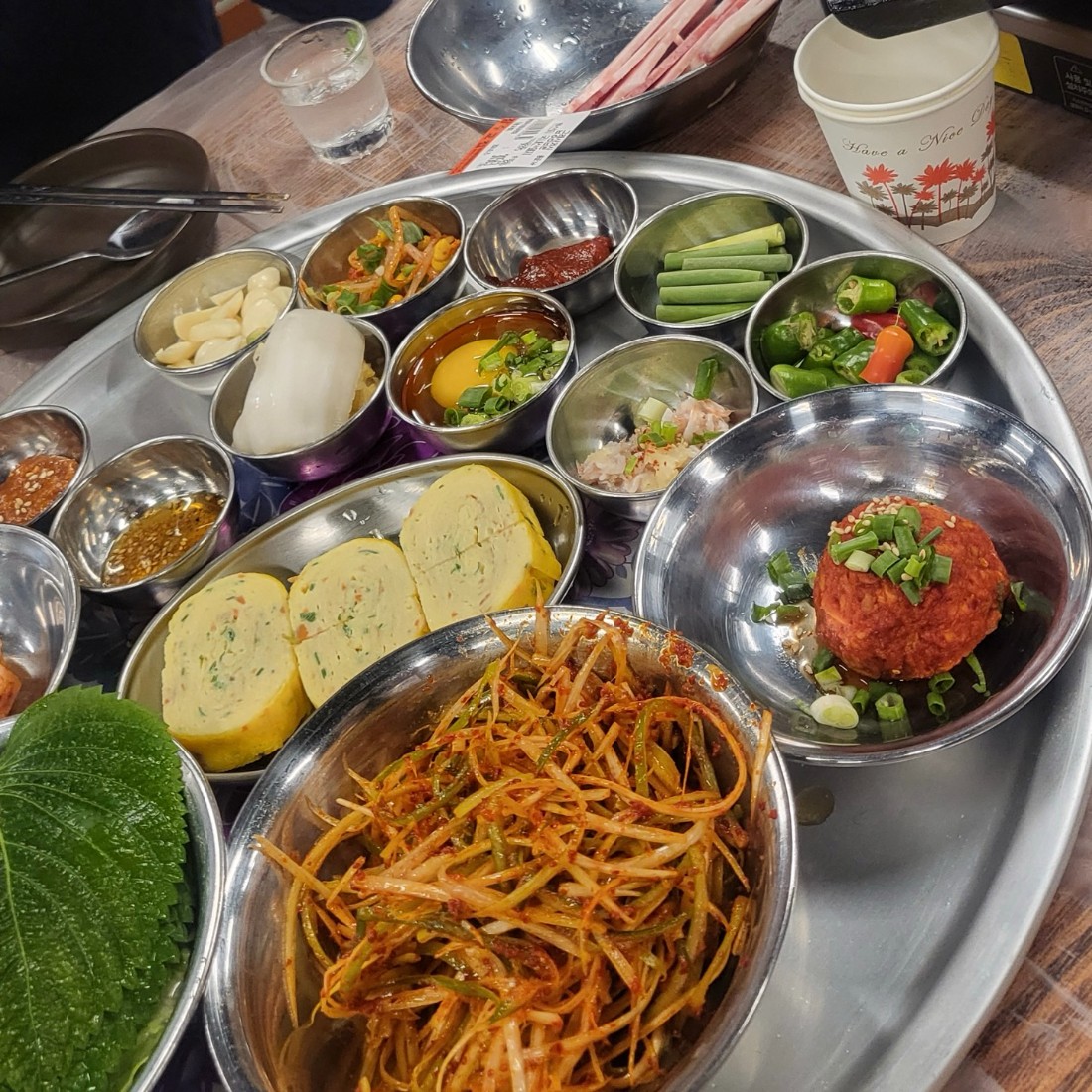✨ I Tried The Viral "외국인이 한국 식당에서 대접받는 꿀팁" – Did They Actually Work?! 🤯
Hey everyone, Quanna here! Let me ask you something. Have you ever walked into a bustling, super local Korean restaurant, the kind where the steam fogs up the windows and you can hear the sizzle of a hot plate from the street, and felt... a little bit invisible? Or maybe you just pointed at the first thing on the English menu and felt like you missed out on something truly special? I have been there SO many times!
It’s that feeling of being an outsider looking in, getting the polite-but-distant service while you see the table of locals next to you getting extra dishes and laughing with the owner. Well, I recently stumbled upon a bunch of articles and videos about "외국인이 한국 식당에서 대접받는 꿀팁" (oe-guk-in-i han-guk sik-dang-e-seo dae-jeob-bad-neun kkul-tip). For my friends who don't speak Korean, that translates to "Honey tips for foreigners to get great treatment at Korean restaurants."
I was so intrigued! Are these just silly life hacks, or do they hold the key to unlocking a whole new level of Korean dining? I decided to put my social anxiety aside, arm myself with these so-called "honey tips," and conduct a little experiment. And you guys, I absolutely have to share what happened. So grab a snack, get comfy, because I'm spilling all the tea (or should I say, *boricha*?) on my little adventure.
🤔 So, What Exactly Are These Magical "Honey Tips"?
First off, for anyone new here, "꿀팁" (kkul-tip) is a fantastic Korean slang word. Kkul means honey, and tip is, well, a tip! So it means a "sweet tip" or a great piece of advice. After diving deep into the Korean internet, I compiled a master list of the most recommended kkul-tips. They all seemed to boil down to one central theme: show genuine effort and appreciation. It’s not about trickery; it's about connection. Here's the game plan I formulated:
- ✔️ Tip 1: The Language Barrier Breaker. Go beyond the basic "Annyeonghaseyo" (Hello) and "Kamsahamnida" (Thank you). The goal was to learn and use a few specific, food-related phrases to show I'd done my homework.
- ✔️ Tip 2: Order Like a Pro. No hesitant pointing. The plan was to decide what I wanted beforehand and order confidently, maybe even asking for a recommendation in Korean to show I trusted their judgment.
- ✔️ Tip 3: The Banchan Appreciation Strategy. This seemed crucial. Banchan are the free side dishes that come with almost every Korean meal. Instead of just quietly eating them, I was going to make a point of vocally appreciating them.
- ✔️ Tip 4: Engage with the Staff. This was the scariest one for me! The goal was to try and make a small, friendly connection with the owner (sajangnim) or the server (often a lovely, hardworking lady called an ajumma or imo, which means 'aunt').
With my mission clear, I picked my testing ground: a small, family-run restaurant in a neighborhood not swarming with tourists, specializing in Kimchi Jjigae (kimchi stew). It looked perfect. Let's call it "Mina's Kitchen." Time to see if this actually works!
🚀 The Grand Experiment: My Day as a Korean Dining Pro!
I walked into Mina's Kitchen around lunchtime on a Tuesday. It was busy, filled with the happy chatter of office workers on their break. The air smelled incredible, a mix of spicy kimchi, savory pork, and steamed rice. I took a deep breath. Game on, Quanna.

💬 Phase One: Dropping My Korean Phrases
An imo-nim (a respectful way to say 'aunt' or refer to the server) bustled over, ready to take my order. My heart was pounding a little! This was it. Instead of just pointing, I made eye contact, smiled, and said, "이모님, 안녕하세요! 김치찌개 이인분 하고 공기밥 두개 주세요." (Imo-nim, annyeonghaseyo! Kimchi jjigae i-inbun hago gong-gi-bap du-gae juseyo.) This means, "Hello, ma'am! Two servings of kimchi stew and two bowls of rice, please." I was dining with a friend, so I had to get the numbers right!
The effect was immediate. It wasn't a huge, dramatic movie scene, but it was a definite shift. Her busy, neutral expression softened instantly. She gave me a wide, genuine smile and replied, "네~ 맛있게 해드릴게요!" (Ne~ masitge haedeurilgeyo!) which means, "Okay! I'll make it delicious for you!" It felt so much warmer than a simple "okay." We were off to a good start. I already felt more comfortable and welcomed.
It's amazing how a few simple, well-placed words can completely change the atmosphere. It communicates, 'I'm not just a tourist passing through; I respect your language and culture enough to try.'
🥢 Phase Two: The Banchan Appreciation Offensive
A few moments later, she returned with a tray laden with colorful banchan. There was seasoned spinach, stir-fried fish cakes, bean sprouts, and, of course, a dish of house-made kimchi. Normally, I would just dig in. But today, I was on a mission.
After trying the stir-fried fish cakes (eomuk bokkeum), I made sure to catch her eye the next time she passed. "이모님, 여기 어묵볶음 진짜 맛있어요! (Imo-nim, yeogi eomuk-bokkeum jinjja masisseoyo!)" — "Ma'am, this stir-fried fish cake is really delicious!"
You guys. This was the moment the magic truly happened. Her face lit up like a Christmas tree. She beamed and patted my shoulder. "Oh, really? I made it this morning! Eat a lot!" In Korea, so much pride is poured into the homemade banchan. They aren't just an afterthought; they're a core part of the meal's identity. By complimenting them, I wasn't just complimenting food; I was complimenting her hard work and skill. If you want to learn more about these amazing little dishes, you should totally check out my ultimate guide to Korean banchan I wrote a while back!
And then, the ultimate reward. She bustled back to the kitchen and came out with a small, extra dish that wasn't given to any other table. It was a little plate of gyeran-mari (a rolled omelet). She placed it down with a wink and said, "This is service." In Korea, "service" (pronounced seo-bi-seu) means it's on the house, a little gift. I was so touched! I felt like I had been initiated into a secret club, all because I said something nice about the fish cakes.
🏆 The Final Verdict: Was It All Worth It?
Absolutely, one hundred percent, YES. The entire meal felt different. The imo-nim checked on us a few times, asking if we needed more rice or soup. When we were paying, she asked where I was from and how I learned to speak Korean so well (I promise you, my Korean is not that good, but the effort was what mattered!). She told us to come back again soon. I left Mina's Kitchen not just with a full stomach, but with a full heart. I felt seen, appreciated, and connected.
These "honey tips" aren't about manipulating people for free food. They're about bridging a cultural gap. They are small acts of respect that transform a simple commercial transaction into a warm, human interaction. It's a reminder that a little effort and kindness go an incredibly long way, no matter where you are in the world. It really aligns with some of the things I discussed in my post about Korean etiquette dos and don'ts; it's all about showing respect.
Frequently Asked Questions Time! 🧐
- Do I need to be fluent in Korean for this to work?
Not at all! Honestly, the fact that you're clearly a foreigner trying your best is what makes it so effective. Just learning a few key phrases shows immense effort. Things like "Igeo juseyo" (This, please), "Jinjja masisseoyo" (It's really delicious), and "Jal meogeosseumnida" (I ate well / Thank you for the meal) are golden.
- What if I'm really shy or introverted? This sounds kind of scary!
I get it, I'm an introvert too! You don't have to do everything on the list. Start small. Maybe just focus on one thing. For example, make it your goal to just say "Jal meogeosseumnida" to the staff as you leave. It's a small step, but it's a powerful one. A warm smile also speaks a universal language!
- Will this work in super touristy areas like Myeongdong or Hongdae?
It can, but it might be a bit tougher. Restaurants in major tourist zones are often designed for high-volume, fast-paced service, and the staff might be too busy for a lot of interaction. These tips are most effective in smaller, neighborhood restaurants where the owners are more directly involved. That's where you find the real gems, anyway!
So, the verdict is in! The "외국인이 한국 식당에서 대접받는 꿀팁" are officially Quanna-approved. They're not a magic spell, but they are a fantastic way to have a richer, warmer, and more delicious dining experience in Korea.
I seriously dare you to try just one of these tips the next time you eat at a Korean restaurant, whether it's in Seoul or in your own hometown! Please come back and tell me all about your experience in the comments below. I'm so excited to hear your stories! 💕
Comments
Post a Comment